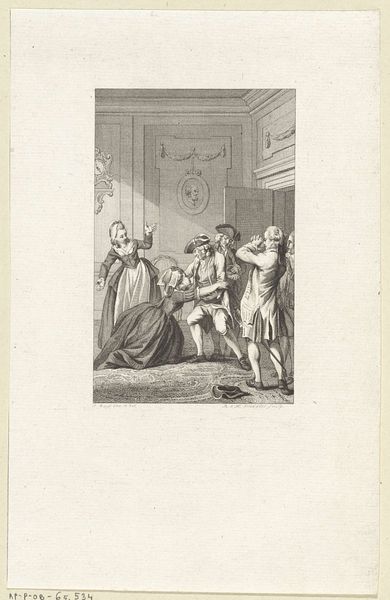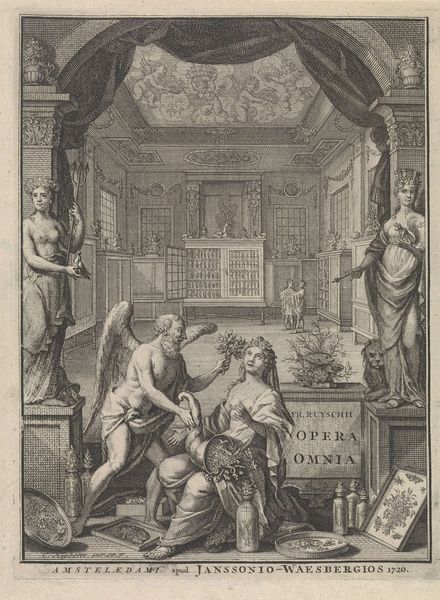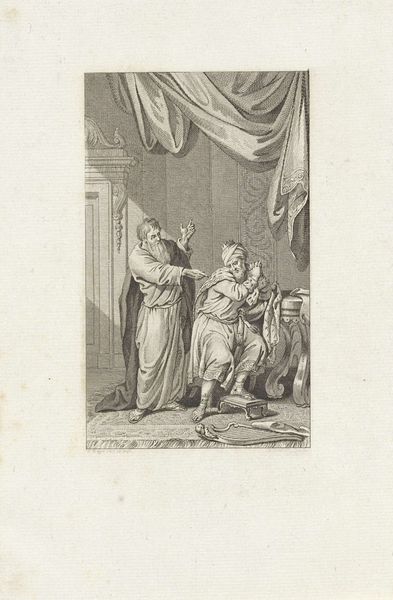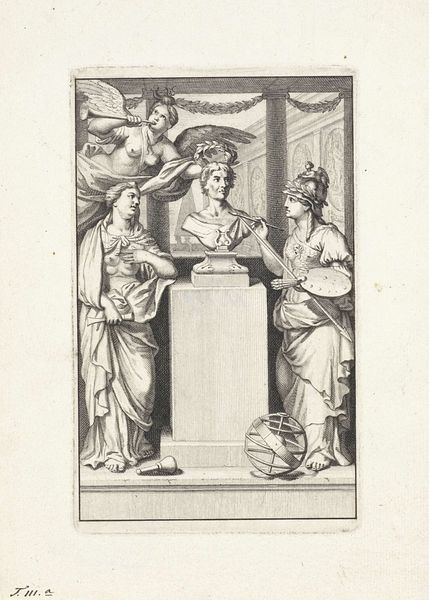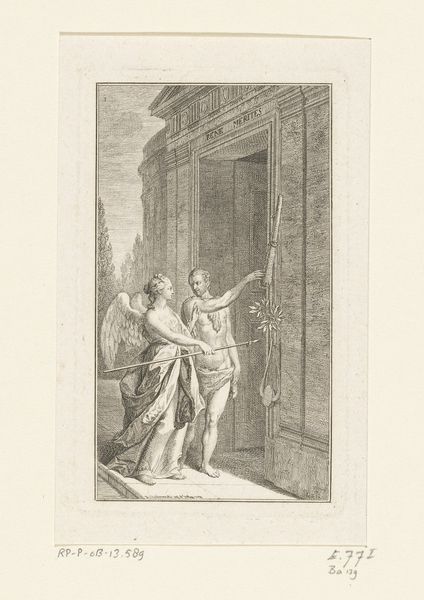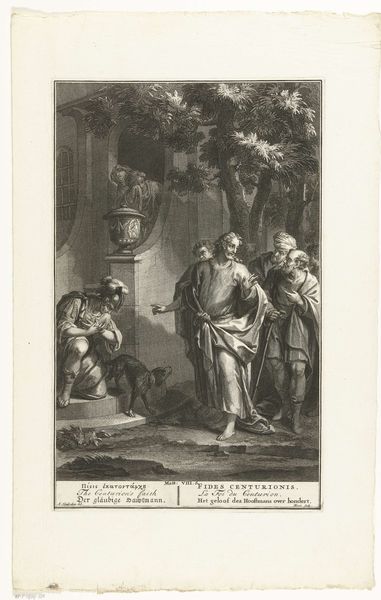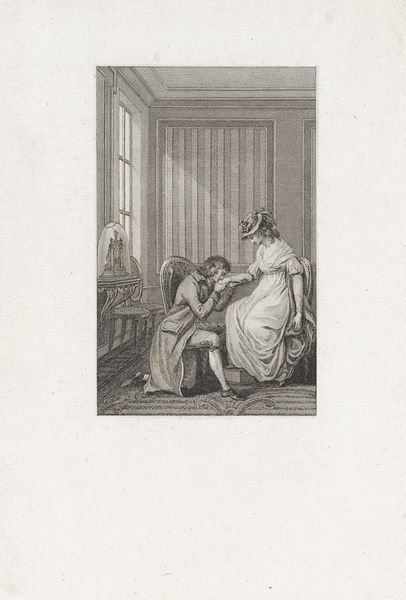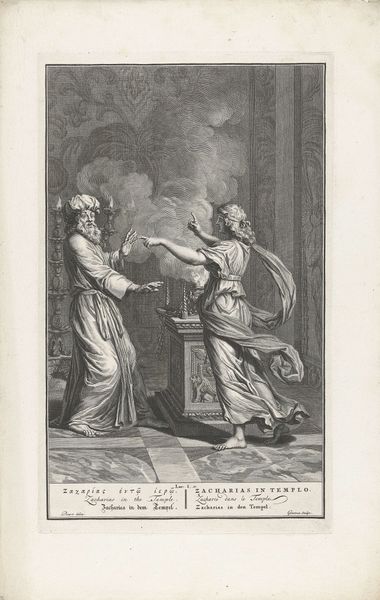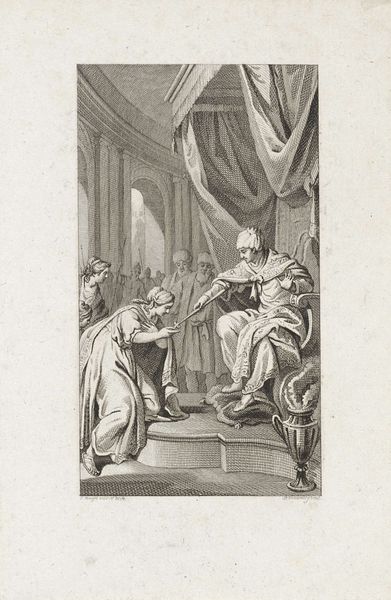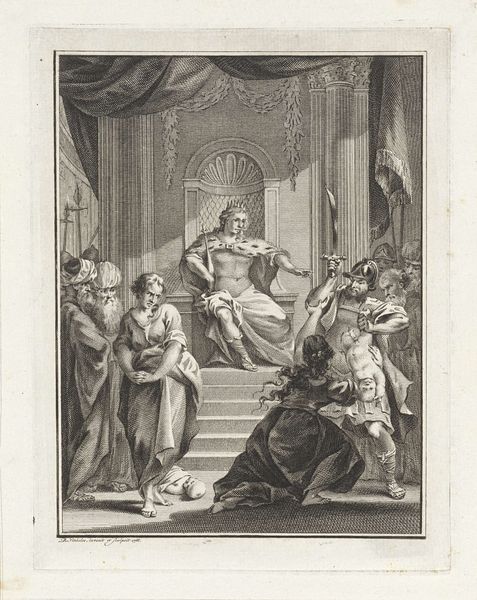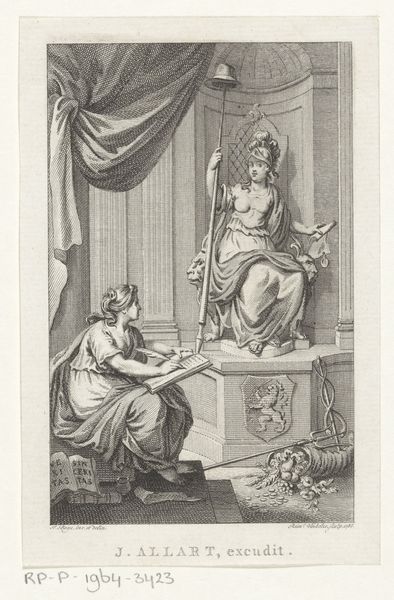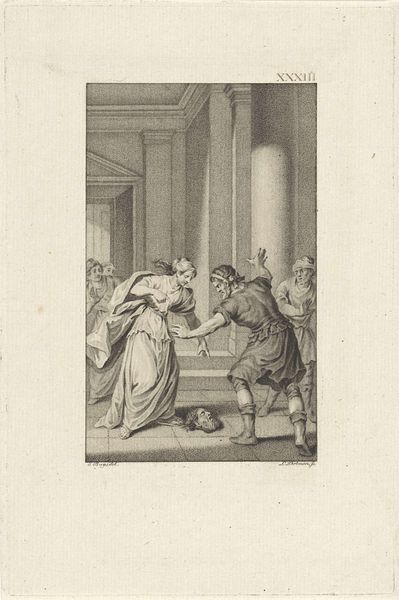
Dimensions: width 153 mm, height 230 mm
Copyright: Rijks Museum: Open Domain
Emmanuel Jean de Ghendt made this print, “Pygmalion sees the statue come to life,” depicting the moment the sculpture Galatea transitions from inanimate art to living woman. Observe the wreath of laurel leaves encircling the statue’s pedestal. Laurel, historically associated with victory and honor, here signifies Pygmalion’s triumph, not in war, but in the realm of creation and artistry. The act of bestowing laurel, often seen in depictions of Apollo, links artistic inspiration with divine favor. The motif of the animated statue echoes through time, appearing in ancient myths and Renaissance paintings, each iteration reflecting cultural anxieties about artifice and the blurring lines between the real and the ideal. Consider the psychological weight of such a transformation. Pygmalion’s desire, given form, speaks to our primal urge to manifest our innermost fantasies. This yearning, eternally human, finds expression across epochs, proving the cyclical, ever-evolving journey of symbols through our collective consciousness.
Comments
No comments
Be the first to comment and join the conversation on the ultimate creative platform.

